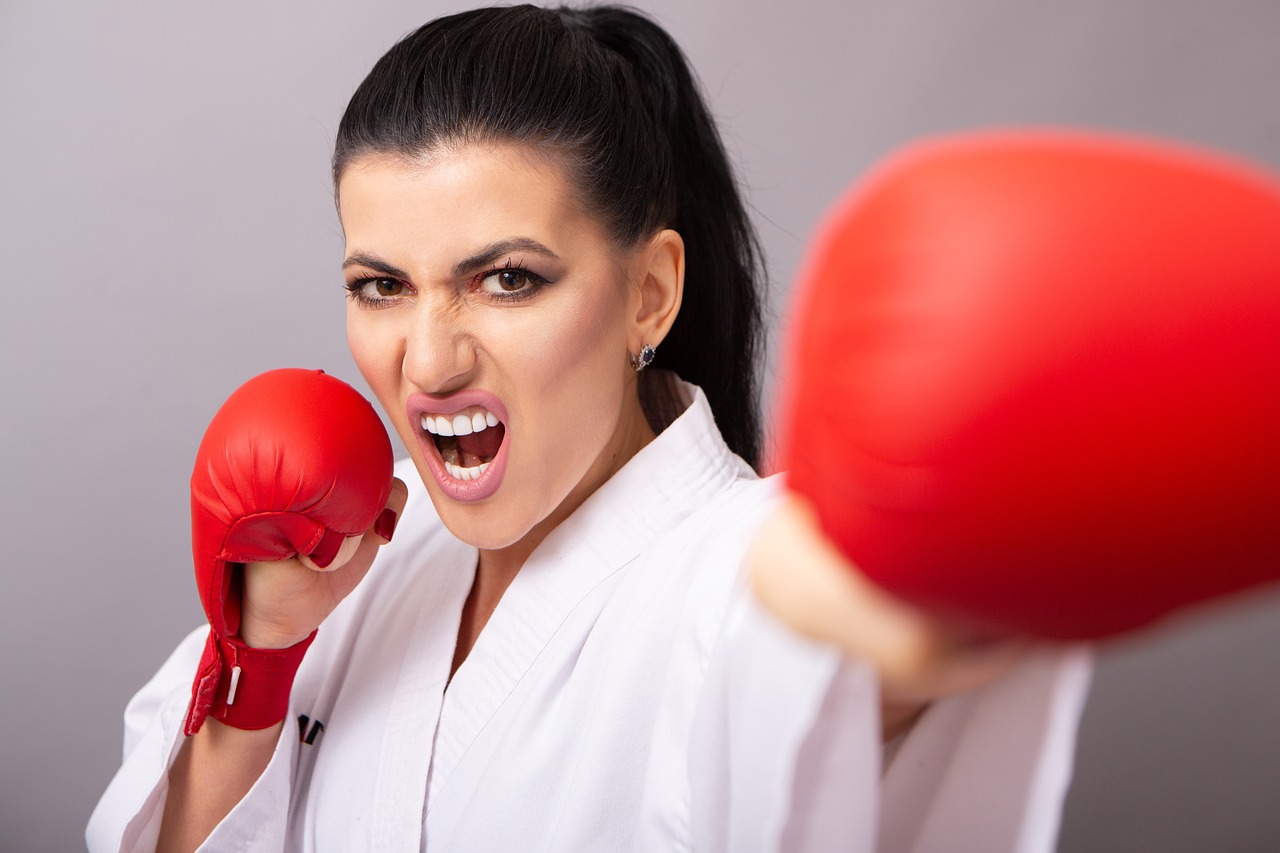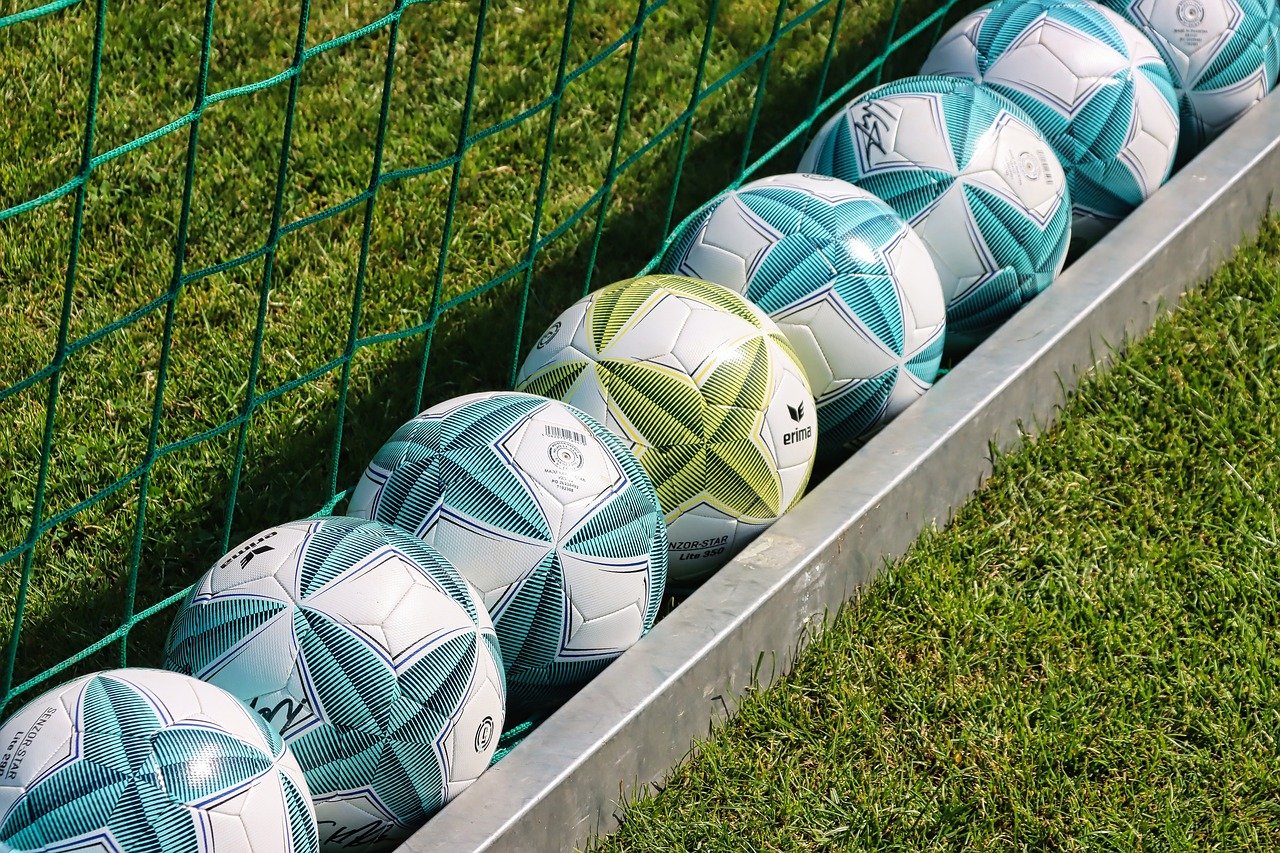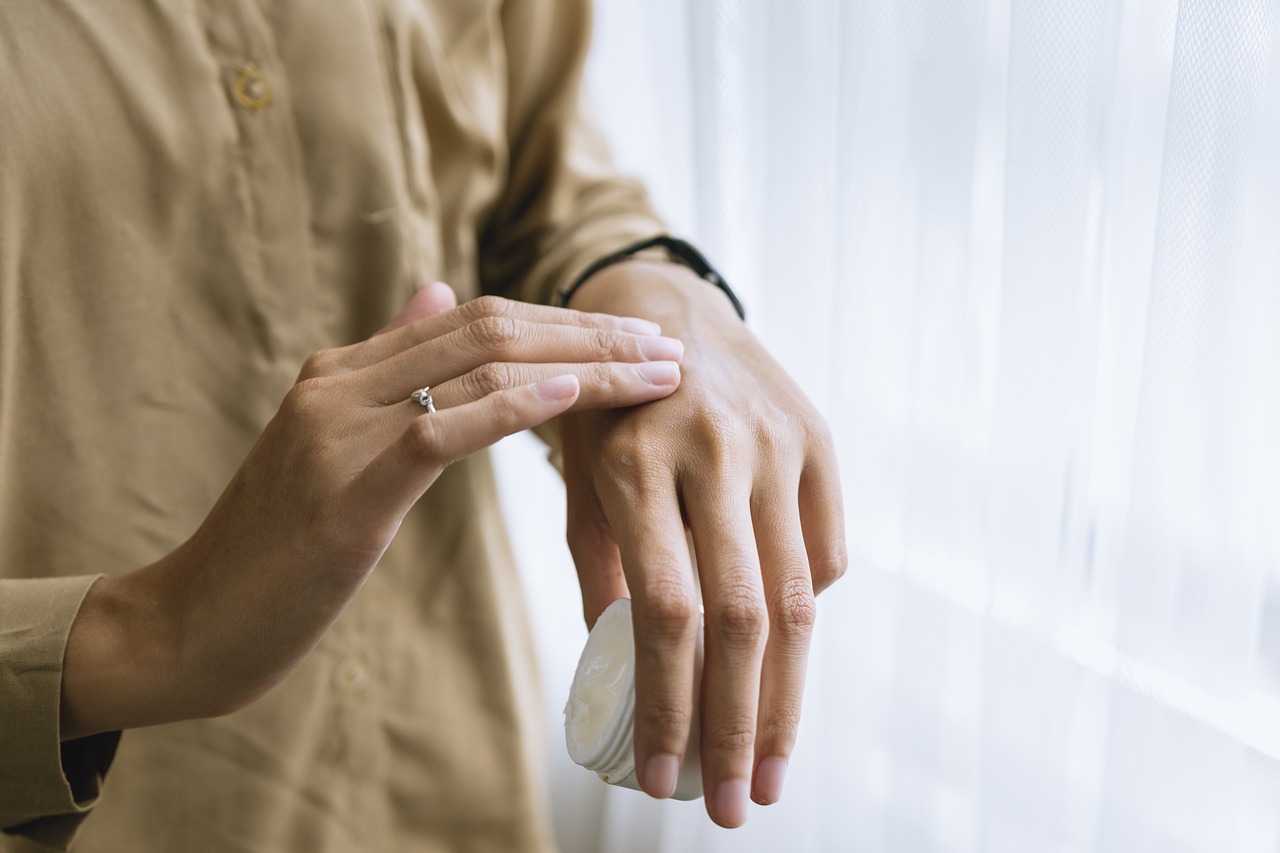Five Most Common Fallacies About Self-Defense Techniques
In a world where personal safety is a growing concern, understanding the truth behind self-defense techniques is crucial. Unfortunately, there are numerous misconceptions that can cloud our judgment and hinder our ability to protect ourselves effectively. This article explores prevalent misconceptions surrounding self-defense techniques, aiming to clarify misunderstandings and provide accurate insights into effective self-defense practices. By debunking these fallacies, we hope to empower individuals with the knowledge and confidence to take charge of their personal safety.
Many believe self-defense is solely for those who cannot protect themselves. This misconception undermines the importance of self-defense training for everyone, regardless of physical strength or size. In reality, self-defense is not about being physically strong; it's about being smart and aware. Just like a small dog can bark loudly to ward off a larger threat, anyone can learn effective self-defense techniques that leverage technique over brute strength. Self-defense training equips individuals with the skills to handle dangerous situations, making it essential for everyone, not just those who feel vulnerable.
Not all self-defense techniques are created equal. Just as every tool in a toolbox serves a specific purpose, different self-defense methods cater to various situations and needs. Understanding this diversity is key to selecting the right technique for oneself. For instance, some techniques may focus on striking, while others emphasize grappling or escape. The effectiveness of each method can vary based on the scenario, making it vital to choose wisely.
Various martial arts and self-defense systems offer unique approaches. Styles like Krav Maga, which is designed for real-world situations, focus on practical techniques that can be applied under pressure. On the other hand, Brazilian Jiu-Jitsu emphasizes ground fighting and submission holds, making it effective for smaller individuals against larger opponents. Traditional martial arts, such as karate or taekwondo, often include forms and sparring, which can be beneficial for discipline and fitness but may not always translate directly to self-defense situations.
Some techniques may be more effective in real-life scenarios. For example, a technique that works in a controlled environment, like a dojo, may not be as effective on the street where unpredictability reigns. Evaluating which methods work best under pressure is crucial. Adaptability plays a significant role in self-defense; being able to adjust your technique to fit the situation can make all the difference between safety and danger.
Selecting the appropriate self-defense technique can depend on various factors, including personal comfort, physical ability, and the specific threats one might face. It's essential to assess your environment and potential risks when choosing a self-defense method. For example, if you often find yourself in crowded places, techniques that emphasize escape and evasion might be more beneficial than those focusing solely on striking.
Many people believe that understanding theory is enough for self-defense. However, this is a dangerous misconception. Practical training is vital to developing effective skills and confidence in real situations. Just like learning to ride a bike, you can read all about it, but until you actually get on the bike and pedal, you won’t truly understand how to balance or steer. Self-defense requires muscle memory and instinctive reactions, which can only be developed through hands-on practice.
A common misconception is that self-defense solely focuses on physical confrontation. In reality, self-defense encompasses much more than just fighting. The most effective self-defense strategies often begin with awareness and avoidance. Recognizing potential threats and understanding how to navigate situations can help prevent confrontations before they escalate. Think of it like a fire drill; the best way to stay safe from a fire is to avoid it in the first place.
Situational awareness is crucial for preventing confrontations. By enhancing your awareness, you can recognize potential threats before they escalate into dangerous situations. Techniques to improve situational awareness include being mindful of your surroundings, avoiding distractions like your phone, and trusting your instincts. Just like a deer in the woods, being alert to your environment can help you detect danger early on and take appropriate action.
Learning how to de-escalate a situation can prevent violence. Verbal strategies and body language cues can help diffuse tension effectively. For example, speaking calmly and maintaining an open posture can signal that you are not a threat, potentially calming an aggressive individual. In many cases, the goal of self-defense is not to fight but to escape and avoid confrontation altogether.
The notion that self-defense training is primarily for women is misleading. Self-defense is essential for individuals of all genders, ages, and backgrounds. Everyone deserves the right to feel safe and empowered to protect themselves. Self-defense training builds confidence and promotes personal safety for all, reinforcing the idea that everyone can be their own best advocate.
Self-defense training empowers individuals, regardless of gender. It instills a sense of confidence that transcends physical ability. Just like learning to swim can save your life, knowing how to defend yourself can provide peace of mind. This empowerment is crucial in fostering a culture of safety and self-reliance.
Self-defense training fosters community support. Group training can enhance learning experiences and create a sense of belonging. When individuals come together to learn self-defense, they not only gain skills but also build a network of support. This camaraderie can be invaluable, especially when facing personal safety challenges.
The belief that self-defense techniques are inherently dangerous can deter individuals from training. However, with proper instruction and safety measures, self-defense training can be safe and beneficial. Just like any sport, risk can be minimized with the right guidance and precautions. Learning self-defense techniques in a controlled environment allows individuals to practice skills without fear of injury, building both competence and confidence.
- What is the best self-defense technique for beginners? It typically depends on personal comfort and goals, but techniques that focus on awareness and simple escape strategies are often recommended.
- How often should I practice self-defense techniques? Regular practice is key. Aim for at least once a week to maintain and improve your skills.
- Can self-defense training help with confidence? Absolutely! Many individuals report increased confidence and empowerment after completing self-defense training.
- Is self-defense training suitable for children? Yes, many programs are designed specifically for children, focusing on awareness and safety.

Fallacy 1: Self-Defense is Only for the Weak
Many people hold the belief that self-defense is a skill reserved for those who are physically weak or vulnerable. This misconception can be incredibly misleading. In reality, self-defense is a vital skill for everyone, regardless of their physical attributes. Think about it: even the strongest individuals can find themselves in situations where they need to protect themselves. Just like a well-built fortress can still be vulnerable to an unexpected attack, so too can a person of any size or strength face threats.
Self-defense training is not just about brute strength; it’s about awareness, strategy, and confidence. People often underestimate the power of mental preparedness and the ability to assess a situation before it escalates. By learning self-defense techniques, individuals can equip themselves with the tools necessary to navigate potentially dangerous scenarios. This training fosters a sense of empowerment that transcends physical capabilities.
Moreover, self-defense practices can be beneficial for individuals of all ages and backgrounds. Consider the following points:
- Empowerment: Self-defense gives individuals the confidence to handle unexpected situations. It teaches them to trust their instincts and make informed decisions.
- Prevention: Understanding self-defense techniques can help individuals avoid confrontations altogether. Knowledge is a powerful deterrent.
- Community Building: Self-defense classes often create a sense of community, allowing participants to bond over shared experiences and learn from one another.
In essence, the belief that self-defense is only for the weak is not just a fallacy; it’s a barrier that prevents many from realizing their own potential. Just as a skilled musician practices their craft to perform confidently on stage, individuals of all strengths and sizes can benefit from self-defense training. It’s about preparation and resilience, not just physical prowess.
So, the next time you hear someone say that self-defense is only for the weak, remind them that it’s actually a skill that can empower anyone. Whether you’re a seasoned athlete or someone who’s never stepped into a gym, self-defense is about enhancing your ability to protect yourself and those you care about. It’s a universal right, not a privilege.

Fallacy 2: All Self-Defense Techniques are the Same
When it comes to self-defense, many people fall into the trap of thinking that all techniques are created equal. This is a common misconception that can lead to ineffective strategies and, ultimately, unsafe situations. Just like choosing the right tool for a job, selecting the appropriate self-defense technique is crucial for ensuring your safety. The reality is that self-defense encompasses a wide range of methods, each tailored to different situations, environments, and individual capabilities.
To understand this better, let’s dive into the diversity of self-defense techniques. For instance, consider the differences between martial arts styles like Krav Maga, Brazilian Jiu-Jitsu, and traditional martial arts such as Tae Kwon Do or Karate. Each of these disciplines offers unique approaches to self-defense:
| Technique | Description | Best For |
|---|---|---|
| Krav Maga | A practical and aggressive self-defense system focused on real-world situations. | Realistic threat scenarios |
| Brazilian Jiu-Jitsu | A grappling-based martial art emphasizing ground fighting and submissions. | Close combat and leverage |
| Tae Kwon Do | A Korean martial art known for its high, fast kicks and dynamic footwork. | Striking and agility |
| Karate | A traditional martial art focusing on striking techniques, including punches and kicks. | Self-discipline and striking |
As you can see, each technique has its strengths and weaknesses. For example, Krav Maga is designed to be effective in real-life scenarios, emphasizing quick, decisive actions to neutralize threats. On the other hand, Brazilian Jiu-Jitsu is fantastic for situations where you might find yourself on the ground, allowing you to use leverage and technique to defend against larger opponents. This diversity is essential because not every situation will call for the same response.
Moreover, understanding the effectiveness of these techniques in real situations is crucial. While some methods may look impressive in a dojo, they might not hold up under the pressure of an actual confrontation. For instance, high-flying kicks may be spectacular in a tournament but could leave you vulnerable in a street fight. This is why adaptability is key in self-defense training; being able to assess your environment and choose the right technique can make all the difference.
So, how do you choose the right technique for you? It often depends on several factors, including your physical abilities, the specific threats you may face, and even your personal comfort level with certain styles. It's essential to evaluate your situation and select a technique that aligns with your needs. Remember, self-defense is not a one-size-fits-all scenario; what works for one person may not work for another.
In summary, the belief that all self-defense techniques are the same is a dangerous fallacy. By understanding the variety of self-defense methods available and recognizing their unique applications, you can better prepare yourself for potential threats. So, take the time to explore different styles and find what resonates with you. Your safety is worth the effort!
- What is the best self-defense technique for beginners?
Many beginners find that techniques from Krav Maga or Brazilian Jiu-Jitsu are effective, as they focus on practical skills and real-world application.
- Can self-defense techniques be learned online?
While online resources can provide valuable information, practical training with a qualified instructor is essential for developing effective skills.
- Do I need to be physically fit to learn self-defense?
No, self-defense techniques can be adapted to fit individuals of all fitness levels. The key is to find a style that suits your body and abilities.

Understanding Different Styles
When it comes to self-defense, the variety of techniques and styles available can be both exciting and overwhelming. It’s crucial to understand that not all self-defense methods are created equal. Each style offers unique approaches, philosophies, and techniques that cater to different situations and individual needs. For instance, Krav Maga is renowned for its emphasis on real-world scenarios, teaching practitioners to respond effectively under pressure. In contrast, Brazilian Jiu-Jitsu focuses on ground fighting and submissions, allowing smaller individuals to defend themselves against larger opponents.
To truly grasp the effectiveness of these styles, let’s take a closer look at a few popular self-defense systems:
| Style | Focus | Key Techniques |
|---|---|---|
| Krav Maga | Real-world self-defense | Strikes, defenses against grabs, and disarming techniques |
| Brazilian Jiu-Jitsu | Ground fighting | Submissions, joint locks, and positional control |
| Muay Thai | Striking | Knees, elbows, and clinch work |
| Traditional Karate | Striking and forms | Punches, kicks, and kata (forms) |
Understanding these differences is essential when choosing the right self-defense technique for your personal circumstances. For example, if you find yourself in a crowded environment, techniques from Krav Maga may prove more beneficial due to their focus on quick, decisive actions. On the other hand, if you’re looking for a way to defend yourself on the ground, Brazilian Jiu-Jitsu might be your best bet, as it teaches you how to control an opponent without relying on brute strength.
Moreover, the effectiveness of a technique often hinges on the practitioner's ability to adapt it to real-life situations. Training in a controlled environment is one thing, but facing an actual threat can be entirely different. This is why it's important to not only learn the techniques but to also practice them in realistic scenarios. The more you train, the more instinctive your reactions will become, allowing you to respond appropriately when it truly matters.
Ultimately, the key takeaway here is that self-defense is not a one-size-fits-all solution. It’s about finding the style that resonates with you and aligns with your personal safety goals. So, whether you’re drawn to the striking techniques of Muay Thai or the grappling arts of Brazilian Jiu-Jitsu, embracing a style that suits your needs is the first step toward effective self-defense.
- What is the best self-defense style for beginners?
Many beginners find that styles like Krav Maga or Brazilian Jiu-Jitsu offer practical techniques that are easy to learn and apply in real-life situations.
- Do I need to be physically fit to learn self-defense?
No, self-defense training can be adapted to fit any fitness level. The focus should be on technique and strategy rather than physical strength alone.
- How long does it take to become proficient in self-defense?
The timeline varies depending on the individual and the style of self-defense chosen. Regular practice and training can lead to noticeable improvements within a few months.

Effectiveness in Real Situations
When it comes to self-defense, one of the most crucial aspects to consider is the effectiveness of techniques in real-life scenarios. It's easy to assume that what works in a controlled environment, like a dojo or training facility, will seamlessly translate to an actual confrontation. However, this is often far from the truth. In reality, the chaotic nature of a street altercation can drastically change the dynamics of a self-defense situation. Factors such as adrenaline, fear, and the unpredictability of the attacker can all play a significant role in determining whether a technique will be successful or not.
For instance, techniques that require complex movements or extensive training may be less effective when faced with an unexpected threat. In a high-pressure situation, having a repertoire of simple and effective moves can be far more beneficial. This is where systems like Krav Maga shine, as they focus on instinctive reactions and practical responses to threats. The goal is to neutralize the threat quickly and efficiently, rather than engaging in a prolonged fight. In fact, many self-defense experts emphasize that the best self-defense technique is often the one that can be executed in a matter of seconds.
Moreover, the environment plays a significant role in the effectiveness of self-defense techniques. For example, if you find yourself in a confined space, techniques that require a lot of movement may not be practical. Conversely, if you're in an open area, you might have more options available for escape or countering an attack. This adaptability is essential in self-defense training, as it prepares individuals to think on their feet and respond appropriately to their surroundings.
To illustrate this point further, let's consider a comparison of different self-defense systems and their effectiveness in real situations:
| Self-Defense System | Key Focus | Effectiveness in Real Situations |
|---|---|---|
| Krav Maga | Realistic scenarios, quick neutralization | Highly effective due to instinctive techniques |
| Brazilian Jiu-Jitsu | Ground fighting, leverage | Effective, but requires close proximity and grappling skills |
| Traditional Martial Arts | Forms and katas | Less effective in spontaneous situations |
Ultimately, the effectiveness of self-defense techniques in real situations boils down to practice and adaptability. Training in a variety of techniques and understanding how to apply them in different circumstances can significantly enhance your ability to defend yourself. The best approach is to combine physical training with mental preparation, enabling you to stay calm and focused when faced with a threat. Remember, self-defense isn't just about knowing how to fight; it's about being able to assess a situation and react appropriately, whether that means defending yourself, escaping, or de-escalating the conflict.
- What is the best self-defense technique for beginners? - Techniques that focus on simple, effective moves like those found in Krav Maga are often recommended for beginners.
- How often should I practice self-defense techniques? - Regular practice, at least once a week, can help reinforce skills and build muscle memory.
- Can self-defense training be beneficial for children? - Absolutely! Self-defense training can boost children's confidence and teach them important safety skills.
- Is self-defense only about physical confrontation? - No, self-defense also includes awareness, de-escalation, and avoidance strategies.

Choosing the Right Technique
When it comes to self-defense, selecting the right technique can feel like trying to find a needle in a haystack. With so many options available, how do you know which method will best suit your needs? The truth is, choosing the right self-defense technique is a personal journey that requires careful consideration of several factors. First and foremost, you should assess your own physical abilities and limitations. Are you more comfortable with grappling techniques, or do you prefer striking methods? Understanding your own strengths can help narrow down your choices.
Another crucial aspect to consider is the environment in which you might need to use these techniques. For instance, if you live in an urban area, learning techniques that are effective in close quarters might be more beneficial. On the other hand, if you find yourself in open spaces often, techniques that allow for mobility and distance may serve you better. It's all about tailoring your training to fit your lifestyle.
Moreover, it's essential to think about the types of scenarios you may encounter. Are you more likely to face an aggressive individual in a bar or a potential attacker in a parking lot? Each situation demands different responses. For example, in a crowded space, using techniques that allow you to escape rather than engage might be more effective. Understanding the context can significantly influence which self-defense techniques you should focus on.
Finally, remember that the best self-defense technique is one that you practice regularly. Consistency is key in developing muscle memory and confidence. A technique that feels great in theory may not work as well without regular practice. Therefore, when choosing a technique, consider accessibility to training facilities and instructors who can provide proper guidance and feedback.
In summary, choosing the right self-defense technique isn't just about picking the flashiest moves from a YouTube video. It's about understanding your body, your environment, and your potential threats. Take your time, do your research, and most importantly, get out there and train. After all, the best defense is a well-prepared mind and body!
- What is the best self-defense technique for beginners?
For beginners, techniques that focus on situational awareness and de-escalation are often recommended. These skills can help prevent confrontations before they escalate.
- Do I need to be physically fit to learn self-defense?
No, self-defense techniques can be adapted to suit individuals of all fitness levels. It's more about learning how to use your body effectively.
- How often should I practice self-defense techniques?
Regular practice is essential. Aim for at least once a week, but more frequent sessions can help reinforce skills and build confidence.
- Can self-defense training help with confidence?
Absolutely! Many individuals find that self-defense training not only teaches them how to protect themselves but also boosts their overall confidence and self-esteem.

Training vs. Theory
When it comes to self-defense, a common misconception is that simply understanding the theory behind techniques is enough to ensure personal safety. However, this couldn't be further from the truth. Just like learning to ride a bike, reading about it doesn't prepare you for the actual experience. Practical training is essential for developing the necessary skills and confidence to respond effectively in real-life situations.
Consider this: you can read every book on martial arts, watch countless videos, and even attend seminars, but without hands-on practice, the knowledge remains just that—knowledge. It’s like knowing how to cook a gourmet meal by watching a cooking show but never stepping into the kitchen yourself. The moment you face a real confrontation, your mind may go blank, and your body may not respond as you expect. This is why engaging in regular training sessions is crucial.
Moreover, practical training allows individuals to develop muscle memory, which is vital during high-stress situations. When faced with a threat, the body tends to react instinctively, and if those reactions have not been trained, the likelihood of freezing or panicking increases. A well-structured self-defense program will incorporate various scenarios, ensuring that students can practice their techniques under pressure. This kind of training not only builds physical skills but also enhances mental resilience.
To illustrate the importance of training vs. theory, consider the following table that outlines key differences:
| Aspect | Theory | Training |
|---|---|---|
| Knowledge Acquisition | Conceptual understanding of techniques | Hands-on application of techniques |
| Muscle Memory | None | Developed through repetition |
| Confidence Level | Low, due to lack of practice | High, from real-life simulation |
| Response to Stress | Theoretical knowledge may fail under pressure | Instinctive reactions trained through practice |
In conclusion, while understanding the theory behind self-defense is beneficial, it is the practical training that truly prepares individuals for the unexpected. By engaging in regular practice, you not only sharpen your skills but also cultivate self-confidence and a sense of empowerment that theory alone cannot provide. So, if you're serious about self-defense, don’t just read about it—get out there and train!
- How often should I train in self-defense? Regular training is recommended, ideally at least once or twice a week, to build and maintain your skills.
- Can I learn self-defense online? While online resources can be helpful, they should complement in-person training for the best results.
- What if I have a physical limitation? Many self-defense programs can be tailored to accommodate individuals with physical limitations. It's essential to communicate your needs with your instructor.
- Is self-defense training only for women? Absolutely not! Self-defense is important for everyone, regardless of gender, age, or background.

Fallacy 3: Self-Defense is Only About Fighting
When you think of self-defense, what comes to mind? Many people picture a dramatic fistfight or a high-octane martial arts showdown. But here's the kicker: self-defense is not just about throwing punches or grappling on the ground. In reality, it encompasses a broad spectrum of skills and strategies designed to keep you safe in potentially dangerous situations. It's like having a toolbox; each tool serves a different purpose, and not every problem requires the same tool to fix it.
At its core, effective self-defense is about awareness, avoidance, and de-escalation. Imagine walking down the street and noticing someone acting suspiciously. Instead of waiting for a confrontation, you can choose to cross the street or take a different route. This proactive approach is a vital aspect of self-defense that many overlook. Being aware of your surroundings can often prevent a conflict before it even begins.
Moreover, if a situation does escalate, knowing how to de-escalate it can be a game-changer. This involves using verbal techniques and body language to diffuse tension. For instance, maintaining a calm demeanor, using a steady voice, and showing open body language can often help in cooling down an aggressive person. Think of it as being a peacekeeper; your goal is to resolve the conflict without resorting to physical confrontation.
To illustrate this point further, consider the following table that summarizes the key components of self-defense beyond fighting:
| Component | Description |
|---|---|
| Aware | Being conscious of your surroundings and potential threats. |
| Avoid | Taking steps to steer clear of dangerous situations. |
| De-escalate | Using verbal and non-verbal techniques to calm a tense situation. |
| Fight | Only as a last resort when all other options have failed. |
So, the next time someone tells you that self-defense is only about fighting, you can confidently respond that it’s much more than that. It’s about being prepared, knowing how to react, and having the confidence to handle various situations without resorting to violence. Self-defense is an empowering skill set that equips you with the tools to navigate the world more safely and confidently.
- Can self-defense be learned by anyone? Absolutely! Self-defense techniques can be adapted for people of all ages and fitness levels.
- Is physical confrontation necessary in self-defense? Not at all! The primary goal is to avoid confrontation whenever possible.
- How can I improve my situational awareness? Practice being present in your environment, observe your surroundings, and trust your instincts.
- Are self-defense classes safe? Yes, when taught by qualified instructors who prioritize safety and proper techniques.

The Role of Situational Awareness
Situational awareness is like having a superpower in today's unpredictable world. It’s not just about being aware of your surroundings, but also about understanding the dynamics of a situation before it escalates. Imagine walking into a crowded room; instead of just focusing on your phone or chatting with friends, you take a moment to scan the area. You notice who seems agitated, who is alone, and what exits are nearby. This ability to read the room can be the difference between a safe night out and a dangerous encounter.
Enhancing your situational awareness involves a few key practices that anyone can adopt. First, it’s essential to develop an instinct for recognizing potential threats. This doesn’t mean living in constant fear; rather, it’s about being alert and mindful. For instance, if you see someone acting suspiciously—perhaps loitering or frequently looking around—your intuition should kick in. This is your cue to either move to a different area or prepare yourself mentally for a possible confrontation.
Furthermore, situational awareness isn’t just about observing; it’s about interpreting what you see. Ask yourself questions like:
- What is the context of this situation?
- Are there any unusual behaviors I should be concerned about?
- What are my options for escape if needed?
These questions help you to not only assess your surroundings but also to prepare a mental action plan. The more you practice this way of thinking, the more instinctive it will become.
Moreover, situational awareness extends beyond just physical spaces. It includes understanding social dynamics and emotional cues in interactions. For example, in a conversation, picking up on body language and tone can give you valuable insight into whether the other person is feeling threatened or aggressive. This awareness can guide you in choosing your words carefully, potentially avoiding a conflict before it starts.
In summary, situational awareness is a vital skill that everyone can cultivate. It’s not just about avoiding danger; it’s about empowering yourself to navigate life’s complexities with confidence. By honing your ability to observe and interpret your environment, you can enhance your personal safety and make informed decisions in moments of uncertainty.
Q: What is situational awareness?
A: Situational awareness is the ability to perceive and understand your environment, recognize potential threats, and make informed decisions based on that information.
Q: How can I improve my situational awareness?
A: You can improve situational awareness by practicing mindfulness, observing your surroundings regularly, and learning to interpret social cues and body language.
Q: Is situational awareness only important for self-defense?
A: No, situational awareness is beneficial in various aspects of life, including personal safety, professional environments, and social interactions.
Q: Can situational awareness be developed over time?
A: Absolutely! Like any skill, situational awareness can be developed through practice and experience.

De-Escalation Techniques
When it comes to self-defense, many people envision a physical confrontation, but the truth is that can be just as vital, if not more so, in preventing violence. Imagine you're walking down the street and suddenly find yourself in a heated argument with someone. Your heart races, and adrenaline kicks in. In that moment, the ability to calm the situation can be the difference between a peaceful resolution and a physical altercation. So, how do we effectively de-escalate a tense situation?
First and foremost, communication is key. Using a calm and steady voice can help reduce tension. When speaking, it's essential to maintain a non-threatening posture. This means keeping your hands visible and avoiding aggressive gestures. Instead of pointing fingers or raising your voice, try to use open body language. This approach signals to the other person that you are not a threat, which can help lower their defenses.
Another valuable technique is to validate the other person's feelings. Acknowledging their emotions can help them feel heard and understood. For instance, saying something like, "I see that you're upset, and I understand why," can go a long way in diffusing anger. It shows empathy and can encourage the other person to calm down, creating an environment where rational discussion can occur.
Additionally, it’s important to be aware of your surroundings. Situational awareness can help you identify potential dangers before they escalate. For example, if you notice a group of people nearby who seem agitated, it might be wise to change your route or engage them in a friendly manner to ease the tension. This proactive approach can often prevent confrontations altogether.
Here are some effective de-escalation techniques to keep in mind:
- Active Listening: Show that you are listening by nodding and making eye contact. This can create rapport and trust.
- Use "I" Statements: Instead of saying "You are wrong," try "I feel uncomfortable when..." This reduces defensiveness.
- Offer Solutions: If appropriate, suggest a compromise or solution that addresses both parties’ concerns.
Remember, the goal of de-escalation is not to "win" an argument but to find a peaceful resolution. By practicing these techniques, you not only enhance your self-defense skills but also contribute to a safer environment for everyone involved. So the next time you find yourself in a potentially volatile situation, take a deep breath, remember these strategies, and approach the situation with the intent to resolve rather than confront.
Q1: What is de-escalation in self-defense?
De-escalation refers to techniques used to reduce the intensity of a conflict or potential violence, focusing on communication and understanding rather than physical confrontation.
Q2: Can de-escalation techniques be learned?
Absolutely! Many self-defense classes include de-escalation training as an essential component, teaching individuals how to handle confrontations calmly and effectively.
Q3: Are de-escalation techniques effective in all situations?
While de-escalation techniques can be very effective, they may not work in every situation, especially if the other party is highly aggressive or under the influence of substances. Always prioritize your safety.
Q4: How can I practice de-escalation techniques?
You can practice de-escalation techniques by role-playing scenarios with friends or family, attending workshops, or taking self-defense classes that include communication strategies.

Fallacy 4: Self-Defense is Only for Women
One of the most persistent misconceptions about self-defense is the belief that it is primarily a concern for women. This notion is not only misleading but also diminishes the importance of self-defense training for individuals of all genders, ages, and backgrounds. The reality is that self-defense is a vital skill set that everyone can benefit from, regardless of their physical attributes or societal roles. Just as anyone can be a target of aggression, anyone can learn to protect themselves effectively.
Self-defense training is about empowerment. It's not just about learning how to throw a punch or execute a perfect kick; it's about building confidence and enhancing personal safety. For men, women, and non-binary individuals alike, acquiring self-defense skills can lead to a greater sense of security in everyday situations. Imagine walking down a dimly lit street, feeling the weight of uncertainty. Now picture yourself equipped with the knowledge and skills to handle potential threats. That’s the kind of empowerment self-defense training offers.
Moreover, self-defense training fosters a sense of community. When individuals train together, they create bonds that go beyond the dojo or training hall. Group training sessions can enhance the learning experience, as participants share their insights, challenges, and victories. This camaraderie can be especially beneficial for those who might feel intimidated about starting their self-defense journey alone. In essence, self-defense is a collective journey where everyone can support each other.
It's also important to recognize that the need for self-defense transcends gender. Statistics show that individuals of all genders can be victims of violence. According to recent studies, men are often victims of violent crimes, and many men also face situations where self-defense skills could be essential. By broadening the narrative around self-defense, we can encourage everyone to take part in training, which ultimately leads to a safer community for all.
In conclusion, the idea that self-defense is only for women is a damaging stereotype that needs to be dismantled. Self-defense is for everyone. It is about equipping individuals with the tools they need to navigate their environments safely and confidently. Whether you are a man, woman, or non-binary person, embracing self-defense training can significantly enhance your sense of security and empowerment.
- Is self-defense training only for those who are physically strong? No, self-defense techniques can be adapted for anyone, regardless of their physical strength.
- Can men benefit from self-defense training? Absolutely! Self-defense is crucial for individuals of all genders, and men can also be victims of violence.
- What are the benefits of group self-defense training? Group training fosters community support, enhances learning experiences, and builds confidence.
- Do I need prior experience to start self-defense training? No, self-defense classes are designed for all skill levels, including beginners.

Empowerment for Everyone
Self-defense training is not just a niche activity reserved for a specific group of people; it’s a vital skill that empowers **everyone**. Whether you're a young adult, a senior citizen, a man, or a woman, learning self-defense can significantly enhance your sense of security and confidence. Imagine walking down the street with your head held high, knowing you have the skills to protect yourself if necessary. This empowerment transcends gender and age, allowing individuals to feel more in control of their personal safety.
One of the most significant benefits of self-defense training is the boost in **self-confidence** it provides. When you learn how to defend yourself, you’re not just acquiring physical skills; you’re also building mental resilience. This newfound confidence can affect various aspects of your life, from your professional interactions to your social engagements. You might find yourself more willing to take risks and face challenges, knowing you have the tools to handle unexpected situations.
Moreover, self-defense training fosters a sense of community. Many self-defense classes are designed to be inclusive, welcoming individuals from all walks of life. This creates an environment where people can share experiences, learn from one another, and build supportive networks. In a world where isolation can feel overwhelming, being part of a community that prioritizes safety and empowerment can be incredibly rewarding.
It's essential to recognize that self-defense is not solely about physical confrontation. It’s about understanding your surroundings, developing situational awareness, and knowing how to respond appropriately to various scenarios. This holistic approach means that everyone, regardless of their physical abilities, can find value in self-defense training. For instance, a small individual can learn techniques that leverage their agility and speed, allowing them to escape dangerous situations rather than engage in a physical fight.
In summary, self-defense training is an empowering experience that benefits everyone. It equips individuals with the skills they need to protect themselves while fostering confidence and community. So, whether you’re considering taking your first class or looking to deepen your existing knowledge, remember that self-defense is for **everyone**. It’s about empowerment, safety, and the ability to navigate the world with confidence.
- Is self-defense training only for women? No, self-defense training is beneficial for individuals of all genders and ages.
- Do I need to be physically fit to start self-defense training? Not at all! Self-defense techniques can be adapted to fit various fitness levels.
- How long does it take to learn effective self-defense techniques? The time varies by individual, but many people start feeling confident after just a few classes.
- Can self-defense training help in non-physical situations? Yes, self-defense also emphasizes situational awareness and de-escalation techniques.

Community and Self-Defense
Self-defense training is not just about learning how to throw a punch or escape a hold; it’s also about building a supportive community that fosters growth, understanding, and safety. When individuals come together to learn self-defense, they create a network of trust and camaraderie. This community aspect can be incredibly empowering, as it allows participants to share experiences, tips, and encouragement. Imagine walking into a dojo or training center where everyone is there for the same reason: to learn how to protect themselves and others. This shared goal creates a unique bond that often extends beyond the training mats.
Moreover, training in a group setting allows for diverse perspectives and techniques to be shared. Each person brings their own background and experiences, enriching the learning environment. For example, someone who has practiced martial arts for years might share insights on discipline and focus, while a newcomer might provide fresh viewpoints on modern self-defense challenges. This exchange of ideas not only enhances the training but also builds a sense of belonging and community.
Additionally, self-defense classes often promote a culture of respect and support. Participants learn to rely on one another, whether it’s through practicing techniques or offering moral support during challenging drills. This can be particularly beneficial for individuals who may feel isolated or vulnerable in their daily lives. Knowing that there’s a community backing you up can significantly boost your confidence and resilience.
Training together also creates opportunities for community events, such as workshops, seminars, or self-defense demonstrations. These events not only serve to educate the public about safety and awareness but also strengthen the community ties. They can be a platform for participants to showcase their skills and progress, while also inviting others to join in and learn. In this way, the community becomes a vital part of the self-defense journey, encouraging more people to take their safety seriously.
Ultimately, self-defense is about more than just physical techniques; it’s about creating a supportive environment where individuals can grow and feel empowered. Whether you’re a seasoned martial artist or a complete beginner, being part of a community can enhance your learning experience, provide emotional support, and foster a sense of safety that extends beyond the training sessions. So, if you’re considering self-defense training, remember that you’re not just signing up for a class; you’re joining a community that values empowerment, respect, and personal safety.
- What age is appropriate for self-defense training? Self-defense training can be beneficial for individuals of all ages. Many programs offer classes specifically designed for children, teens, and adults to ensure age-appropriate instruction.
- Do I need to be physically fit to start self-defense training? No, self-defense training is for everyone, regardless of fitness level. Classes often include modifications to accommodate different abilities.
- How long does it take to learn effective self-defense? The time it takes to learn self-defense varies by individual. Regular practice and commitment can lead to noticeable improvements in a few months.
- Are self-defense techniques dangerous? When taught by qualified instructors, self-defense techniques prioritize safety. Proper training emphasizes control and awareness over aggression.

Fallacy 5: Self-Defense Techniques are Dangerous
One of the most pervasive myths surrounding self-defense is the belief that self-defense techniques are inherently dangerous. This misconception often stems from a lack of understanding about what self-defense training truly entails. Many people envision brutal fights and aggressive confrontations when they think about self-defense, which can create a fear of engaging in such practices. However, it's crucial to recognize that the primary goal of self-defense is not to harm others but to protect oneself in dangerous situations.
In reality, self-defense training emphasizes safety, control, and awareness. Qualified instructors prioritize teaching techniques that allow individuals to escape dangerous situations without causing unnecessary harm. This is where the concept of controlled practice comes into play. During training, participants learn how to execute techniques safely, ensuring that they can defend themselves effectively without resorting to excessive force. Proper instruction and a well-structured training environment are essential to mitigate any potential risks.
Moreover, self-defense techniques often include a variety of strategies that focus on awareness and avoidance rather than direct confrontation. For instance, many programs teach participants how to recognize potential threats and de-escalate situations before they become physical. This proactive approach not only reduces the likelihood of violence but also empowers individuals to feel more confident and secure in their daily lives.
It's also worth noting that self-defense training is designed to be accessible to everyone, regardless of their physical capabilities. Many techniques can be adapted to suit different body types and skill levels, which helps to create a safe learning environment. In fact, some self-defense classes focus on using an attacker’s own energy against them, which means that even someone who may not be physically strong can effectively defend themselves.
To further illustrate the importance of proper training, consider the following table that outlines the differences between untrained individuals and those who have undergone comprehensive self-defense training:
| Aspect | Untrained Individuals | Trained Individuals |
|---|---|---|
| Awareness | Low | High |
| Response to Threats | Reactive | Proactive |
| Control of Situation | Chaotic | Controlled |
| Physical Techniques | Random | Strategic |
As you can see, the benefits of self-defense training far outweigh the potential risks. It’s about equipping yourself with the knowledge and skills needed to navigate dangerous situations while maintaining a focus on safety and responsibility. By participating in self-defense classes, individuals not only learn how to protect themselves but also gain valuable life skills that can be applied in various scenarios.
In conclusion, the idea that self-defense techniques are dangerous is a myth that should be dispelled. With the right training and guidance, self-defense can be a safe and empowering practice for anyone. Rather than fearing the techniques themselves, individuals should embrace the opportunity to learn and grow, knowing that they are taking an important step towards personal safety and confidence.
- Is self-defense training suitable for everyone? Yes! Self-defense training is designed for individuals of all ages, genders, and physical abilities.
- Can self-defense techniques be learned in a short time? While some basic techniques can be learned quickly, ongoing practice and training are essential for developing effective skills.
- Are self-defense classes safe? When taught by qualified instructors, self-defense classes prioritize safety and control, making them a safe environment for learning.
- Do I need to be physically strong to defend myself? No, self-defense techniques can be adapted to utilize leverage and technique rather than brute strength.
Frequently Asked Questions
- Is self-defense training only for people who are weak?
No way! Self-defense is for everyone, regardless of size or strength. It's about being prepared and confident in any situation. Think of it as learning to swim; it’s not just for those who can't float, but for anyone who wants to be safe in the water!
- Are all self-defense techniques the same?
Absolutely not! Just like different sports have unique rules and strategies, self-defense techniques vary widely. From Krav Maga to Brazilian Jiu-Jitsu, each style has its own strengths. It’s important to find what fits best for your personal needs and situations.
- Do I need practical training, or is understanding the theory enough?
Theory is a great start, but practical training is where the magic happens! Think of it like learning to ride a bike; you can read all about it, but you won't truly master it until you hop on and practice. Real-life scenarios require muscle memory and confidence, which only come from hands-on experience.
- Is self-defense all about fighting?
Not at all! Self-defense is as much about prevention as it is about confrontation. Awareness, de-escalation, and avoidance are key components. It's like having a fire extinguisher; you hope you never need it, but knowing how to use it can prevent a disaster!
- Is self-defense training only for women?
That's a common misconception! Self-defense is important for everyone, regardless of gender. It's about empowerment and safety, and everyone deserves to feel secure and confident in their ability to protect themselves.
- Are self-defense techniques dangerous?
With proper training and instruction, self-defense techniques can be safe and effective. It’s all about learning the right methods and understanding how to handle situations responsibly. Just like learning to drive, safety comes from education and practice!



















